June 2-3, 2012 · Atkinson Hall Black Box Theater, Calit2, UC-San Diego

Designing Geopolitics 2
An intimate interdisciplinary symposium on policy and projects visualizing a recomposed global landscape of sovereignties, infrastructures and identities.
Convened by
D:GP, The Center for Design and Geopolitics
University of California, San Diego
Benjamin H. Bratton, Director
See Conference Information Page
Contact: benjamin@bratton.info
Twitter: @desgeopolitics (to follow D:GP)
and #dgp2012 (to follow the conference live)
Saturday, June 2, 2012. 9:00-5:00
Calit2/ Atkinson Hall Black Box TheaterLa Jolla, CA
Map and Directions
LINK TO LIVE STREAM ON JUNE 2
Sponsored by:
Calit2: California Institute of Telecommunications and Information Technology
The UCSD Arthur C. Clarke Center for the Human Imagination
UCSD Center for the Humanities
UCSD Department of Visual Arts
UCSD Division of Arts and Humanities
UCSD School of International Relations and Pacific Studies
Parsons/New School Center for Transformative Media, New York
D:GP is a think-tank focused on how planetary scale computation transforms political geography and models of sovereignty, as seen through the lens of speculative art and design. D:GP collaborates directly with scientists, engineers and researchers in a wide range of disciplines, and is supported by the research of its founding Director, Benjamin H. Bratton.
Designing Geopolitics 2 will extend our core critical questions. What is the territory of the Cloud Polis? What alien models of sovereignty require invention, revitalization or redesign? What does it mean to 'see like a State' in an age of ubiquitous networked optics? What is the role of speculative design thinking in prototyping real alternatives? What are the driving and determinant patterns of data-centric society for which we have an inadequate theoretical language? What are the boundaries of biopolitcs, and what comes next?
The first event in June 2011 featured 25 speakers from 19 different disciplines, including Astrophysics, Geology, Architecture, Graphic Design, Information Visualization, Sociology, Earth Sciences, Political Science, Medicine, Art, Science Fiction, and Critical Theory, etc. Designing Geopolitics 2 will be a invitation-only symposium (streamed live online) in which a select group of technologists, policy makers, and designers will share their ideas and work in intensive presentations and discussion.
Schedule
(subject to change)Saturday, June 2
Policies
| 9:30 | Cloud Polis Larry Smarr and Peter Cowhey (Benjamin H. Bratton and Ed Keller, respondents) |

Planetary-scale computation presents critical challenges to global political institutions and how they inscribe and defend monopolies of jurisdiction. Is the Cloud a new territory and, if so, what is the role of the State to govern it? Should we anticipate a new kind of geopolitical relationship between physical and virtual territories, and what kinds of protocols of individual and collective citizenship, linking data to identity across borders or within them, should ensue? In what ways does the geopolitics of big data clarify and amplify familiar tensions across the Pacific and in what ways does it suggest as yet unforeseen realignments? Links: Smarr Cowhey Bratton Keller |
|
| 11:00 | Data Sovereignty Usman Haque and John Wilbanks (Lev Manovich, respondent) |

The geopolitics of data transparency is paradoxical. The production (overproduction?) of data is transforming the world in its image, turning artists into designers of environmental sensors and doctors into data scientists. In this, the open programmability of data is seen (perhaps naively) as the key to a vibrant digital civil society. But the data deluge exists in volatile political and economic contexts, determining what counts as open or closed data, and for whom. While Big Data should allow for revolutionary forms of pattern recognition, our informations commons are partitioned by private walled gardens. What should be the terms of participation in social systems based on exabyte accumulations? What constitutional logics of individuation and collective identity? Which guarantees of what data sovereignty? Links: Haque Wilbanks Manovich | |
| 12:30 | Lunch |
Projects |
|
| 1:30 | Postscripting Alterglobalization Metahaven, and Jeffrey Inaba (Molly Steenson, Natallie Jeremijenko, and Tim Durfee, respondents) |

From the map, to the atlas, to the cosmogram, to the satellite image, the world is that which we can diagram and design. The global is a visual formula, an affective response to the comprehension of planetary space. As such the world-image is as mutable images themselves, and design works to reformulate the global as a political and cultural domain. Infrastructures and institutions of sovereignty, territory, and jurisdiction are re-opened to a graphical imaginary, and in the redrawing of lines and vectors, new maps and alternative worlds take shape. The convergence of architecture, geography, graphic design may provide the pre-emptive atlas of the territories we must realize. In this, design representation becomes an active mode of experimental political science, synthesizing the complexity of the global and modeling otherwise inexpressible alternatives. Links: Metahaven Inaba Steenson Jeremijenko Durfee |
|
| 3:00 | Biopolitical Architectures Alexandra Daisy Ginsberg and Alisa Andrasek (Sheldon Brown and Benjamin H. Bratton, respondents) |

It can be said that all politics --from ecologies to bodies to microbes-- is biopolitics. But with synthetic biology the building blocks of life are available to design imagination in weird and unsettling ways. The very boundaries of the human are perforated and the conceit of human-centered design is made quaint. Well-beyond mere biomimicry, genetic algorithms are put to work assembling architecture. Biology becomes a speculative discourse, less the description of slow evolution, than the conception and exploration of alternative forms of embodiment. For this, life is abstracted to genetic codes that can applied to inorganic and computational processes, like the conception of virtual forms, which in turn are substantialized at the scale of cities. If the domain of the political has been defined by what does and does not count as 'human,' then in the age of digital biology, this precondition is due for revision. Biodesign coneives the biopolitics we might wish to inhabit. Links: Ginsberg Andrasek Brown |
|
| 8:00 | Dinner |
Sunday, JUNE 3
| 9:30 | Tour of Tijuana Urbanism With Tijuana-based architect and urbanist, Rena Peralta |
Biographies
Larry Smarr ↪

Larry Smarr is the founding Director of the California Institute for Telecommunications and Information Technology (Calit2), a UC San Diego/UC Irvine partnership, and holds the Harry E. Gruber professorship in Computer Science and Engineering (CSE) at UCSD’s Jacobs School. At Calit2, Smarr has continued to drive major developments in information infrastructure— including the Internet, Web, scientific visualization, virtual reality, and global telepresence—begun during his previous 15 years as founding Director of the National Center for Supercomputing Applications (NCSA). Smarr served as principal investigator on NSF’s OptIPuter project and currently is principal investigator of the Moore Foundation’s CAMERA project and co-principal investigator on NSF’s GreenLight project. In October 2008 he was the Leadership Dialog Scholar in Australia.
Peter F. Cowhey ↪

Peter F. Cowhey is the Dean and Qualcomm Professor of Communications and Technology Policy at the School of International Relations and Pacific Studies at UC San Diego. In 2009, he served as Senior Counselor to Ambassador Kirk in the Office of the U.S. Trade Representative where he advised on the agenda for trade policy while supervising multiple USTR offices. In the Clinton Administration he served as Senior Counselor and then Chief of the International Bureau of the Federal Communications Commission during its overhaul of its global competition policies and forging of a WTO agreement on telecommunications services. Cowhey is former Director of the UC system's Institute on Global Conflict and Cooperation and head of policy studies for the California Institute on Telecommunications and Information Technology. Cowhey serves on the bi--national experts group appointed by the U.S. and Chinese Governments on innovation policy and is the Chief Policy Officer for the Aspen Institute's International Digital Economy Accords project. He is also the chairman of the CONNECT Innovation Institute and Vice Chair of the California Council on Science and Technology. He serves on the boards of the Grameen Foundation and the Institute of the Americas. He is a member of the Council on Foreign Relations. Cowhey holds a Ph.D. in political science from the University of California, Berkeley. His newest book is Transforming Global Information and Communications Markets: The Political Economy of Change (MIT Press, 2009)
Benjamin H. Bratton ↪
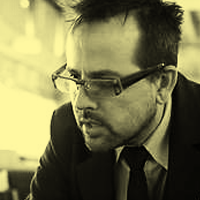
Benjamin H. Bratton is a sociological, media, and design theorist. He is Associate Professor of Visual Arts at the University of California, San Diego, and Director of the Center for Design & Geopolitics at the California Institute of Telecommunications and Information Technology, one of the premier applied research institutes in the application of supercomputing and very-large scale data visualization across the sciences, humanities and social sciences.
Ed Keller ↪

Ed Keller is a designer, professor, writer, musician and multimedia artist. He is also Associate Dean of Distributed Learning and Technology at Parsons The New School for Design, and Associate Professor in the Parsons School of Design Strategies, in NYC. Keller’s professional accomplishments include co-founding with Carla Leitao AUM Studio, an award winning architecture and new media firm that has produced residential projects, competitions, and new media installations in Europe and the US. They have participated in urban design and architecture competitions including MAK Vertical Garden; Turku Finland; UIA Celebration of Cities (National Award); House for Andrei Tarkovsky (first prize) and Museum for Nam June Paik. In academia, he has taught graduate design studios and seminars studying the connections between cinema, architecture, locative media, and digital game design.Taught at the Columbia University GSAPP from 1998-2010. In 2000-01, he was acting director of the GSAPPs Advanced Architectural Design MS degree. Has also taught at SCIArc, as founder/coordinator of the MediaSCAPES MDesR program and fulltime faculty 2007-09; FIU Miami (Cejas Eminent Scholars Endowed Chair); and at UPenn, Pratt, RPI, and Bennington. Since 1993 has lectured on architecture, film and digital media at institutions including Harvard, Pratt, Princeton, Univ. Ramon Llull, Columbia Univ. GSAPP, Parsons, UPenn, Rensselaer Polytechnic, Iowa State, Ohio State, and Rice. Chronomorphology: Active Time in Architecture, a survey of his graduate design studios at the Columbia GSAP, was published in 2004 by CBA. His work and writing has appeared in Praxis, ANY, AD, Arquine, Leonardo Electronic Almanac, Architecture, Parpaings, Precis, Wired, Metropolis, Assemblage, Ottagono, and Progressive Architecture.
Metahaven ↪

Metahaven is a studio for design and research based in Amsterdam, founded in 2006 by Daniel van der Velden and Vinca Kruk. Much of Metahaven‘s early visual work and writing is combined in the book Uncorporate Identity (Lars Müller Publishers, 2010), featuring contributions from Boris Groys, China Miéville, Keller Easterling, David Grewal, and others. Metahaven‘s solo exhibitions include Affiche Frontiére (CAPC musée d‘art contemporain de Bordeaux, 2008) and Stadtstaat (Künstlerhaus Stuttgart and Casco Utrecht, 2009). They have exhibited at Forms of Inquiry (Architectural Association, London, 2007, cat.), On Purpose—Design Concepts (Arnolfini, Bristol, 2008), Manifesta8—The European Biennial for Contemporary Art (Murcia, Spain, 2010, cat.), and Graphic Design Worlds (Triennale Design Museum, Milan, 2011, cat.). Daniel van der Velden is a senior critic in graphic design at Yale University, New Haven, and he teaches at the Sandberg Institute in Amsterdam. Vinca Kruk is a tutor of editorial design at ArtEZ Academy in Arnhem, and she teaches design at Otis College of Art and Design, Los Angeles.
Jeffrey Inaba↪

Jeffrey Inaba is also the founding director of C-Lab, a think tank at Columbia University's Graduate School of Architecture, Planning, and Preservation which studies urban and architecture issues of public consequence. The lab's ideas are broadcast through Volume Magazine, where Inaba is the Features Editor, and numerous publications including the recent book, World of Giving. Previously, Rem Koolhaas and he co-directed the Harvard Project on the City, a research program investigating contemporary urban development worldwide. Before starting INABA, he was a principal of AMO, the research firm founded by Koolhaas' Office for Metropolitan Architecture. In addition to being a faculty member at Columbia, Inaba has taught at UCLA, Harvard and SCI-Arc. Inaba received Master of Architecture with Distinction, MA in Philosophy of Architecture and Master in Design Studies degrees from Harvard University, and an AB from University of California, Berkeley.
Usman Haque ↪

Usman Haque, director Haque Design + Research Ltd, founder of Pachube.com and CEO of Connected Environments Ltd has created responsive environments, interactive installations, digital interface devices and mass-participation performances. His skills include the design and engineering of both physical spaces and the software and systems that bring them to life. He has been an invited researcher at the Interaction Design Institute Ivrea, Italy, artist-in-residence at the International Academy of Media Arts and Sciences, Japan and has also worked in USA, UK and Malaysia. As well as directing the work of Haque Design + Research he was until 2005 a teacher in the Interactive Architecture Workshop at the Bartlett School of Architecture, London. He received the 2008 Design of the Year Award (interactive) from the Design Museum, UK, a 2009 World Technology Award (art), a Wellcome Trust Sciart Award, a grant from the Daniel Langlois Foundation for Art, Science and Technology, the Swiss Creation Prize, Belluard Bollwerk International, the Japan Media Arts Festival Excellence prize and the Asia Digital Art AwardGrand Prize. His work has been exhibited widely throughout the world, including the Institute of Contemporary Arts (London), Ars Electronica, Transmediale, Hillside Gallery (Tokyo), The National Maritime Museum Greenwich, the Tokyo Metropolitan Museum of Photography, Itau Cultural, Sao Paulo, NTT Inter-Communication Centre, Tokyo, the Singapore Biennale, the Dubai World Cup 2009, and the National Art Museum, Beijing, China.
John Wilbanks ↪

John Wilbanks is a Senior Fellow at the Ewing Marion Kauffman Foundation and runs the Consent to Research Project. John worked at Science Commons and Creative Commons from October 2004 to September 2011. As vice president of science he ran the Science Commons project for its five year lifetime and continued to work on science after he joined the core Creative Commons orginzation. Scientific American in 2011 featured Wilbanks in The Machine That Would Predict The Future. Seed magazine named Wilbanks among their Revolutionary Minds of 2008, as a "Game Changer" and the Utne Reader named him in 2009 as one of "50 visionaries who are changing your world". He frequently campaigns for wider adoption of open access publishing in science and the increased sharing of data by scientists
Molly Wright Steenson ↪
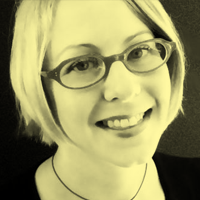
Molly Wright Steenson is a Ph.D. candidate at Princeton University in the School of Architecture. Steenson is writing a dissertation about intelligence, interactivity, information and computing in architecture, with a specific focus on Nicholas Negroponte and Cedric Price. She’s also a design researcher and strategist who studies how technology and infrastructure fit into our lives. Steenson is also was a professor at the Interaction Design Institute Ivrea in Italy.
Alexandra Daisy Ginsberg ↪

Alexandra Daisy Ginsberg is an artist, designer and writer, interrogating science, technology and new roles for design in a biotech future. As Design Fellow on Synthetic Aesthetics, an NSF/EPSRC-funded project at Stanford University and the University of Edinburgh, she is curating an international programme researching synthetic biology, art and design, investigating how we might 'design nature'. Other works include The Synthetic Kingdom, a proposal for a new branch of the Tree of Life; E. chromi, a collaboration with James King and Cambridge University's grand-prize-winning team at the 2009 International Genetically Engineered Machine competition (iGEM) and a science fiction short story - The Well-Oiled Machine, co-written with Oron Catts while resident at SymbioticA, the art and science laboratory at the University of Western Australia in 2009. Daisy taught both theArtsScienceBangalore and Cambridge University iGEM teams in 2009. Most recently, Daisy designed 'Synthesis', a one-week intensive synthetic biology lab workshop for artists, designers, scientists and others, in collaboration with The Arts Catalyst, UCL, SymbioticA, and Synthetic Aesthetics, funded by The Wellcome Trust. Daisy studied Architecture at Cambridge University, Design at Harvard University, and MA Design Interactions at the Royal College of Art. Her work has been exhibited at MoMA NY, The Art Institute of Chicago, The Wellcome Trust, London's Design Museum, the Israel Museum and the National Museum of China. Daisy publishes, teaches and lectures internationally: recent talks include TEDglobal and PopTech. Her work was nominated for the Brit Insurance Designs of The Year 2011, the Index Award 2011 and she received the World Technology Award (Design) 2011.
Alisa Andrasek ↪
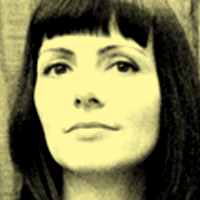
Alisa Andrasek is an experimental practitioner and research based educator of architecture and computational processes in design. In 2001 she founded biothing, a cross-disciplinary laboratory that focuses on the generative potential of computational systems for design. In 2005 she initiated CONTINUUM, an interdisciplinary research collective focusing on advanced computational geometry and software development. Andrasek graduated from the University of Zagreb, and holds a Masters in Advanced Architectural Design from Columbia University. She teaches architecture studios and theory seminars at the Architectural Association in London (AA DRL) and has taught at Columbia University, Pratt Institute, the University of Pennsylvania, RMIT Melbourne and Rensselaer Polytechnic Institute, and has lectured at architecture schools worldwide. Andrasek was co-winner of the Metropolis Next Generation Design Competition, 2005 and received the FEIDAD Design Merit Award, 2004. Recent exhibitions of biothing's work include: Permanent Collection Centre Pompidou Paris 2009; FRAC Collection in Orleans 2009; Transitory Objects TB-A21 in Vienna 2009; Synathroisis in Athens Greece 2008; Scripted by Purpose at the F.U.E.L. gallery in Philadelphia 2007; Seroussi pavilion at the Maison Rouge gallery in Paris 2007; Ars Mathematica in Paris 2007; the 2003 Prague Biennale; the 2004 Sydney Biennial; Architectural Biennial Beijing 2004, 2006 and 2008; and the New Museum of Contemporary Art, New York, 2005. She curated the East Coast section for the 'Emergent Talent Emergent Technologies' exhibition for the Beijing Biennial 2006 and for the '(Im)material Processes: New Digital Techniques for Architecture' for the Beijing Biennial 2008.
Sheldon Brown↪

Sheldon Brown is Director of the UCSD Arthur C. Clarke Center for the Human Imagination. His work combines computer science research with vanguard cultural production. He was the long-time Director of the Center for Research in Computing and the Arts (CRCA) at the University of California, San Diego (UCSD) where he is Professor of Visual Arts and a co-founder of the California Institute of Telecommunications and Information Technologies (Calit2). He is also the UCSD Site Director of the NSF supported Industry-University Collaborative Research Center for Hybrid Multicore Computing Research. He has shown his work at: The Museum of Contemporary Art in Shanghai, The Exploratorium in San Francisco, Ars Electronica in Linz Austria, The Kitchen in NYC, Zacheta Gallery in Warsaw, Centro Nacional in Mexico City, Oi Futuro in Rio de Janeiro, Museum of Contemporary Art San Diego, and others. THe has also been featured at leading edge techno-culture conferences such as Supercomputing, SIGGRAPH, TedX GDC and other conferences of leading edge techno-culture. He has been commissioned for public artworks in Seattle, San Francisco, San Diego and Mexico City, and has received grants from the NSF, AT&T New Experiments in Art and Technology, the NEA, IBM, Intel, Sun Microsystems, SEGA SAMMY, Sony, Vicon and others.
Lev Manovich ↪

Lev Manovich is the author of Software Takes Command (released under CC license, 2008), Soft Cinema: Navigating the Database (The MIT Press, 2005), and The Language of New Media (The MIT Press, 2001) which is described as “the most suggestive and broad ranging media history since Marshall McLuhan.” Manovich is a Professor in Visual Arts Department, University of California -San Diego, a Director of the Software Studies Initiative at California Institute for Telecommunications and Information Technology (CALIT2), and a Professor at European Graduate School (EGS). He is much in demand to lecture around the world, having delivered 450 lectures, seminars and workshops during the last 10 years.
Rene Peralta ↪
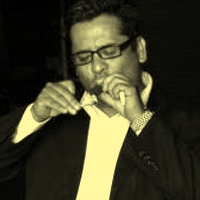
Rene Peralta is the Director of the Landscape Urbanism program at Woodbury University in San Diego. Based in Tijuana, Mexico, he was educated at the New School of Architecture in San Diego and at the Architectural Association in London. A native of Tijuana, has taught architecture and urban design at Universidad Iberoamericana in Tijuana, was visiting faculty at UCLA in 2005, visiting critic at University of Colorado, Denver and Boulder campus in 2006. He is currently visiting professor at Washington University, St. Louis summer abroad program and a full time faculty member at Woodbury University School of Architecture in San Diego. Rene's work in the last few years has been directed toward the research of social and cultural forms of the urban border between the cities of Tijuana, Mexico and San Diego, California. Projects range from online web reports and texts, publishing books and writing collaborations, as well as participating in museum exhibitions and leading an architecture design practice in Tijuana. He has published texts in the US, Mexico, Cuba and Italy and France and lectured at UCLA, USC, North Carolina State University, Harvard University among others. His research work includes World View: a web based report on architecture and urbanism for The Architectural League of New York and is co-author of the book Here is Tijuana, Black Dog Publishing, London 2006. His work has been exhibited in the San Diego Museum of Contemporary Art, Santa Monica Museum of Art, Casa Mexico in the Mexican Embassy in Washington DC and in the Schenzhen Architecture and Urbanism Biennale 2007 in China. His work with Washington University won a 2009 Smart Growth Award from the Urban Land Institute. Was international guest lecturer at Arquitectos Latinos 09 in Managua, Nicaragua.
Tim Durfee ↪

Tim Durfee is a designer whose work has been published and exhibited widely, and his installations and exhibitions for major museums (many with collaborator Iris Anna Regn) have won numerous awards. Much of his work is inspired by simple category hybrids, such as buildings-as-interfaces, cities-as-databases, objects-as-ideologies, the web-as-cinema, exhibitions-as-magazines, sound-as-space, crowds-as-output. Durfee is a core faculty member of Art Center College of Design's Graduate Media Design program, which has a focus on new practices and contexts for design. He is director of amp, an experimental project-based initiative he founded in 2010 which produced the multi-facetted projects PLAN C (a speculative inquiry into disaster preparedness) and MADE UP: Design's Fictions. The current amp project Public Display examines the changing roles and meanings of public space in the age of global imaging and Street View. He is founding editor, with the artist Stan Douglas, of Art Center Graduate Press. Before joining Art Center in 2009, Durfee was on the architectural design faculty at SCI-Arc for over a decade, where he directed the Visual Studies program. He received his Master of Architecture from Yale University, and studied English, History, and music at the University of Rochester and Eastman School of Music. Durfee is on the advisory boards of the Los Angeles Forum for Architecture and Urban Design, the Julius Schulman Institute, and Big City Forum. He is a member of the noise band Health and Beauty.
Natalie Jeremijenko ↪
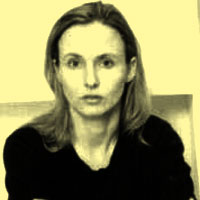
Natalie Jeremijenko directs the xdesign Environmental Health Clinic. Previously she was on the Visual Arts faculty at UCSD, and Faculty of Engineering at Yale. Her work was included in the 2006 Whitney Biennial of American Art (also in 1997) and the Cooper Hewit Smithsonian Design Triennial 2006-7. She has a permanently installed Model Urban Development on the roof of Postmasters Gallery in Chelsea, featuring 7 residential housing developments, concert hall, and other public amenities, powered by human food waste where it continues to toy with new conceptions of urban futures, and re-imagine our relationship to nonhuman organisms. Her work is described as experimental design, hence xDesign, as it explores the opportunity new technologies present for non violent social change. Her research centers on structures of participation in the production of knowledge, and information and the political and social possibilities (and limitations) of information and emerging technologies -- mostly through public experiments. In this vein, her work spans a range of media from statistical indices (such as the Despondency Index, which linked the Dow Jones to the suicide rate at San Francisco's Golden Gate Bridge) to biological substrates (such as the installations of cloned trees in pairs in various urban micro-climates) to robotics (such as the development of feral robotic dog packs to investigate environmental hazards). The Environmental Health Clinic develops and prescribes locally optimized and often playful strategies to effect remediation of environmental systems, producing measurable and mediagenic evidence, and coordination diverse projects to effective material change. Jeremijenko is also a visiting professor at Royal College of Art, in London and an artist not-in-residence at the Institute for the Future. Palo Alto.
Jeffrey Inaba ↪

Jeffrey Inaba is also the founding director of C-Lab, a think tank at Columbia University's Graduate School of Architecture, Planning, and Preservation which studies urban and architecture issues of public consequence. The lab's ideas are broadcast through Volume Magazine, where Inaba is the Features Editor, and numerous publications including the recent book, World of Giving. Previously, Rem Koolhaas and he co-directed the Harvard Project on the City, a research program investigating contemporary urban development worldwide. Before starting INABA, he was a principal of AMO, the research firm founded by Koolhaas' Office for Metropolitan Architecture. In addition to being a faculty member at Columbia, Inaba has taught at UCLA, Harvard and SCI-Arc. Inaba received Master of Architecture with Distinction, MA in Philosophy of Architecture and Master in Design Studies degrees from Harvard University, and an AB from University of California, Berkeley.
Location
The event will be held in the Calit2 auditorium which holds 202 people and provides world-class telepresence, audio-video recording and webcasting, multimedia presentation, and archiving capabilities as core facility services. The telepresence capabilities of Calit2 Auditorium are particularly important as we anticipate having at least two conference speakers participate via remote video conferencing link from New York and/or Europe. The digital AV capabilities are critical as the conference will be both webcast live as well as archived for subsequent publication and dissemination.
Outcomes
The conference event will be a unique meeting of scholars and practitioners, from disciplinary and institutional positions who normally are not able to collaborate directly even on shared concerns, and facilitation of this is the primary goal. Events will also be recorded and transcribed immediately after their conclusion and will be made publicly available online for scholarly access, public access and policy planning purposes. Further, conference proceedings will form the basis of an edited volume that would have considerable appeal to academic publishers because of the high caliber of participants, the timeliness of subject matter, and uniqueness of such a broadly interdisciplinary range of participants.
Online and offline
The conference will convene in La Jolla, but will available for viewing live online via the web. The events will also be recorded and transcribed for subsequent publication. As event planning continues we will be investigating how in-place web infrastructure at UCSD could be deployed to extend and enhance the conference event across pedagogical strategies.





